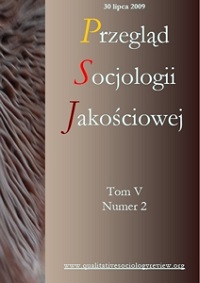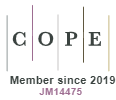The hidden curriculum of physical non-didactical space of the university
DOI:
https://doi.org/10.18778/1733-8069.5.2.03Keywords:
the hidden curriculum, physical space of the university, university, qualitative research, photography, autobiographical researcher’s perspective, qualitative analysisAbstract
The article focuses on issues concerning the hidden curriculum of physical space where university education is realizing. In the first part I will attempt to describe the hidden curriculum in the context of physical non-didactical space of the university. I will refer to selected authors and studies in this area, and then I will present the examples of mostly English studies that have been conducted in this field. The next part of the article will emphasize the methodological issues. I will start with defining the research problems – setting the questions about the hidden curriculum relating to the organization of selected elements of physical non-didactical space of the university i.e. the entrance to the building, staircases, hallways, halls. Afterwards I will present the selected pattern and method of research – the qualitative research orientation with a reference to the activity of taking photographs in order to gather empirical material. The analysis of visual data will provide me with a base for research conclusions as an attempt to answer the research problems.
Downloads
References
Benton, Ted i Ian Crain (2003) Filozofia nauk społecznych. Od pozytywizmu do postmodernizmu. Przełożył L. Rasiński. Wrocław: Wydawnictwo Dolnośląskiej Szkoły Wyższej Edukacji TWP we Wrocławiu
Google Scholar
Bergenhenegouwen, George (1987) “Hidden curriculum in the university”. Higher Education 16
Google Scholar
DOI: https://doi.org/10.1007/BF00128420
Bobrowska, Ewa (2006) “Ukryte programy jako efekt oddziaływania stereotypowych definicji sytuacji”. Pedagogika Społeczna: numer 3
Google Scholar
Bourdieu, Pierre i Jean – Claude Passeron (2006) Reprodukcja. Elementy teorii systemu nauczania. Przełożyła E. Neyman. Warszawa: Wydawnictwo Naukowe PWN
Google Scholar
Costello, Carrie (2001) „Schoolde by the Classroom. The (Re)production of Social Stratification in Professional School Setting.” S. 45 – 59 in The Hidden Curriculum in Higher Education, (pod red.) E. Margolis. New York & London: Routledge
Google Scholar
Dougherty, Kelvin i Floyd Hammack (1997) „Druga strona uczelni: nieakademickie efekty uczelni wyższej”. Przełożył P. Kwieciński. Acta Universitatis Nicolai Copernici Socjologia wychowania XIII Zeszyt: 317
Google Scholar
Gair, Marina I Guy Mullins (2001) “Hiding in Plaun Sight.” S. 21 – 41 in The Hidden Curriculum in Higher Education, (pod red.) E. Margolis. New York & London: Routledge
Google Scholar
Gatto, John (2000) Dumbing Us Down. The hidden Curriculum of Compulsory Schooling. Philadelphia: New Society Publishers
Google Scholar
Giroux, Henry (1983) Theory and resistance in education: A pedagogy for the opposition. New York: Bergin and Garvey
Google Scholar
Harper, Douglas (2005) „What’s New visually?” S. 747 – 762 in The Sage Handbook of qualitative research. Third Edition, (pod red.) N. K. Denzin, Y. S. Lincoln. Thousand Oaks – London – New Delhi: Sage Publications
Google Scholar
Jackson, Philip (1983) “The Daily Grind.” S. 19 – 95 in The Hidden Curriculum and Moral Education. Deception or Discovery?, (pod red.) H. Giroux, D. Purpel. California: McCutchan Publishing Corporation
Google Scholar
Janowski, Andrzej (1995) Uczeń w teatrze życia szkolnego. Warszawa: WSiP
Google Scholar
Konecki, Krzysztof (2005) „Wizualne wyobrażenia. Główne strategie badawcze w socjologii wizualnej a metodologia teorii ugruntowanej”. Przegląd Socjologii Jakościowej. Tom I, Numer 1. Pobrany I 2007 r. http://www.qualitativesociologyreview.org/PL/archive_pl.php
Google Scholar
DOI: https://doi.org/10.18778/1733-8069.1.1.04
Kruszewski, Krzysztof (2002) „Kobietka i macho-chłopczyk: program przemycony”. Ruch Pedagogiczny numer: 1 – 2
Google Scholar
Lynch, Kathleen (1989) „The Hidden Curriculum: Reproduction in Education. An appraisal”. New York – London – Philadelphia: The Falmer Press
Google Scholar
Margolis, Eric (ed.) (2001) “The Hidden Curriculum in Higher Education”. New York & London: Routledge
Google Scholar
Margolis, Eric; Michael Soldatenko; Sandra Acker I Marina Gair (2001) “Peekaboo Hiding and Putting the Curriculum.” S. 1 – 19 in The Hidden Curriculum in Higher Education, (pod red.) E. Margolis. New York & London: Routledge.
Google Scholar
DOI: https://doi.org/10.4324/9780203901854
Meighan, Roland (1993) Socjologia Edukacji, (pod red.) Z. Kwieciński. Przełożyła E. Kiszkurno – Koziej, Z. Knutsen, P. Kwieciński. Toruń: Wydawnictwo Uniwersytetu Mikołaja Kopernika w Toruniu
Google Scholar
Melosik, Zbyszko (1995) Współczesne amerykańskie spory edukacyjne (między socjologią edukacji a pedagogiką postmodernistyczną). Poznań: Wydawnictwo Naukowe Uniwersytetu Adama Mickiewicza
Google Scholar
Nalaskowski, Aleksander (2002) Przestrzenie i miejsca szkoły. Kraków: Oficyna Wydawnicza „Impuls”
Google Scholar
Nowotniak, Justyna (2002) Ukryty program szkolnej rzeczywistości. Szczecin: Kwadra
Google Scholar
Olechnicki, Krzysztof (2000) „Antropologiczne penetracje wizualnych przestrzeni rzeczywistości: fotografia jako narzędzie badawcze”. Kultura i społeczeństwo numer 4
Google Scholar
Piekarski, Jacek (2006) „O drugoplanowych warunkach poprawności praktyki badawczej w pedagogice – perspektywa biografii.” S. 97 – 126 w Metodologia pedagogiki zorientowanej humanistycznie, (pod red.) D. Kubinowski, M. Nowak. Kraków: Oficyna Wydawnicza „Impuls”
Google Scholar
Siarkiewicz, Elżbieta (2000) Ostatni bastion. Jawne i ukryte wymiary pracy przedszkola. Kraków: Oficyna Wydawnicza „Impuls”
Google Scholar
Sztompka, Piotr (2005) Socjologia wizualna. Fotografia jako metoda badawcza. Warszawa: Wydawnictwo Naukowe PWN
Google Scholar
Wolan, Tadeusz (2005) „Diagnoza edukacyjna w ukrytym programie szkół wyższych.” S. 87 – 100 w Polski system edukacyjny po reformie 1999 roku. Stan, perspektywy, zagrożenia, (pod red.) Z. Andrzejczak, L. Kacprzak, K. Pająk. Poznań – Warszawa: Dom Wydawniczy ELIPSA
Google Scholar
Zemło, Mariusz (1996) „Ukryty program szkoły”. Studia Socjologiczne numer 1
Google Scholar
Żlobnicki, Wiktor (2002) Ukryty program w edukacji. Między niewiedzą a manipulacją. Kraków: Oficyna Wydawnicza „Impuls”
Google Scholar
Downloads
Published
How to Cite
Issue
Section
License

This work is licensed under a Creative Commons Attribution-NonCommercial-NoDerivatives 4.0 International License.














